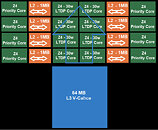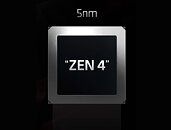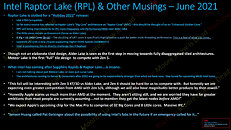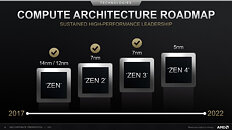
Two AMD Ryzen 7000 Series Processors Based on Zen 4 Core Appear: 16-Core and 8-Core SKUs
AMD's Ryzen 7000 series of desktop processors based on the novel Zen 4 core architecture are scheduled to arrive in the second half of 2022. While we are not sure just how big the architectural differences will be going from Zen 3 (with or without 3D V-cache) to the new Zen 4 core, we have some leaked information that confirms the existence of two SKUs that reveal additional details about the processor configuration. In the MilkyWay@Home project, aiming to create a model of the Milky Way galaxy by utilizing countless PCs across the globe, we found two next-generation Ryzen 7000 SKUs. The MilkyWay@Home project isn't a benchmark. However, it is a valuable reference where the next generation processors appeared.
First in line is the 100-000000666-21_N CPU, a codename for an eight-core, sixteen-threaded design. This model should correspond to the AMD Ryzen 7 7800X CPU, a successor to the Ryzen 7 5800X model. Next in line is the 100-000000665-21_N CPU with 16 cores and 32 threads, a successor to the Ryzen 9 5950X named Ryzen 9 7950X. One important thing to note is that these new CPUs feature different level two (L2) cache configurations. With the previous generation 5000 series "Vermeer" processors, the L2 cache was locked at 512 KB per core. However, according to today's leak, the upgraded Zen 4 IP will bring 1024 KB of L2 cache per core, doubling the cache size at one of the fastest levels.
First in line is the 100-000000666-21_N CPU, a codename for an eight-core, sixteen-threaded design. This model should correspond to the AMD Ryzen 7 7800X CPU, a successor to the Ryzen 7 5800X model. Next in line is the 100-000000665-21_N CPU with 16 cores and 32 threads, a successor to the Ryzen 9 5950X named Ryzen 9 7950X. One important thing to note is that these new CPUs feature different level two (L2) cache configurations. With the previous generation 5000 series "Vermeer" processors, the L2 cache was locked at 512 KB per core. However, according to today's leak, the upgraded Zen 4 IP will bring 1024 KB of L2 cache per core, doubling the cache size at one of the fastest levels.















































